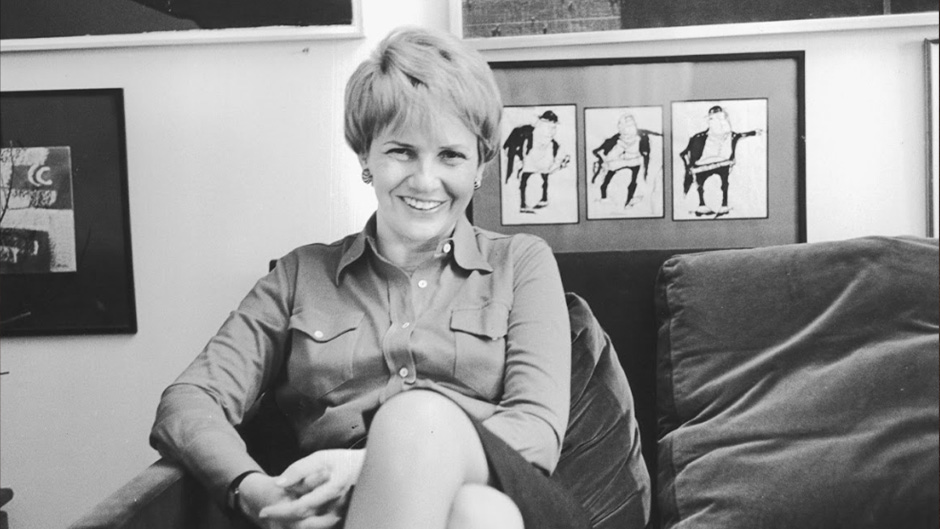She was a woman ahead of her time.
A passionate journalist, a lover of the arts, and an inspirational leader and tireless hard worker who founded the first world-renowned Museum of Contemporary Art in Caracas, Venezuela, Sofía Ímber was a force to be reckoned with.
Ímber’s television program “Buenos Dias,” which she hosted with her second husband Carlos Rangel from 1969 to 1993, was a landmark of Venezuelan journalism and politics.
She became famous for her thoughtful and incisive interviews with global leaders such as former U.S. President Jimmy Carter, Israel’s Simon Peres, and the Dalai Lama, as well as with writers like Gabriel García Márquez.
“My mother was an extraordinary human being and a woman ahead of her time,” said her daughter Adriana Meneses. “She was a woman who succeeded in many spheres.”
Recently, Meneses and her sister Daniela Meneses Ímber donated their mother’s archives to the Otto G. Richter Library at the University of Miami. A major exhibit, “The Legacy of Sofía Ímber: Pioneering Journalist, Museum Founder and Director,” featuring items from the Ímber archive will run beginning in November through spring 2025. An event celebrating the opening of the exhibit and commemorating the 100th anniversary of Ímber’s birth will be held at the Kislak Center at the University of Miami on Thursday, Nov. 7.
“The Ímber Archive offers the University of Miami Libraries an opportunity to preserve the memory of an important cultural figure in the Venezuelan and international communities,” said Dean of Libraries Charles “Chuck” Eckman. “The archive reflects Ímber’s role as a journalist and museum curator and connects with a wide range of topics in the arts, literature, and politics. We hope it will also expand our connections to the Venezuelan diaspora community in South Florida.”
The collection includes correspondence, videos of her television interviews, photos, and programs and posters from the numerous art exhibits from her museum.
Born in 1924 in Soroca, Romania, now Moldova, Ímber was brought to Venezuela as a child. After studying at the Universidad de los Andes, she held positions within El Nacional, El Universal, Ultimas Noticias, and Diario 2001. In 1971, she published a book titled “Yo la intransigente” (I, the Intransigent One).
“There are so many things to learn from this archive,” said Beatrice Skokan, head of manuscripts and archives management. “She was a professional writer and journalist in roles that women did not hold in the 1950s. She covered topics about women and children.”
Ímber married writer Guillermo Meneses in 1944 and had four children. They became members of the diplomatic corps, and both traveled to Europe, where they were stationed in Paris and Brussels.
The couple made acquaintances with intellectuals and Venezuelan expatriate artists and many other artists. Upon returning to Venezuela, she starred in “Buenos Dias” and produced and conducted “Sólo con Sofía and La Venezuela Posible,” a radio show.
In 1971, when Venezuelan authorities were looking for a place to display art, Ímber famously said: “If you give me a garage, I will turn it into a museum.”
Three years after, she transformed a space at the Parque Central complex into the first museum of modern art in Venezuela. It grew to hold pieces by Pablo Picasso, Henri Matisse, Henry Moore, Fernando Botero, and many Venezuelan artists.
The museum was also ahead of its time.
“The museum had a department in braille [for the vision impaired] and a bus that would take exhibits to poor areas of town,” said Meneses. “It also held workshops for children and for senior citizens. It became an artistic institution with the largest number of Picassos in Latin America.”
Ímber was the museum’s director for 30 years.
In 1967, she became the first woman to receive the Premio Nacional de Periodismo de Venezuela and the first Latin American woman to win UNESCO’s Picasso Medal. She also won the French Légion d’Honneur and the Argentinian Orden de Mayo.
Meneses hopes the collection will give insights to students, academics, and researchers in the field of art history, journalism, and Venezuelan history.
“The collection is a reflection of a Venezuela that existed at the highest cultural and political level equal to any first world country,” she said. “It is also a reflection of world-class journalism. It reflects the life of a woman who was able to achieve so much and gave that talent to the world.”
